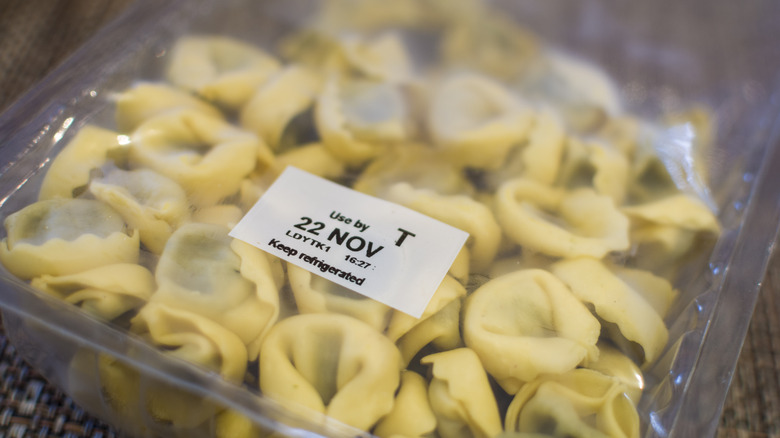Expiration Dates On Food Don't Mean What You Think
At the grocery store, most people don't just grab items and put them straight into their cart. If they're shopping for fruit, for example, they might inspect a few and pick out the ripest ones. For eggs, they might open the carton to check that none of them are broken. The dates stamped on food packages are also there to give consumers more information about these products and help them decide what items to take home. But sometimes these dates can be confusing, especially since the terms used are often very similar.
There are four different date labels you will most likely see on products at the grocery store: best-by, use-by, sell-by, and freeze-by. Though these terms sound relatively interchangeable, they actually mean different things, which is why you'll often see more than one stamped on an item. Contrary to popular belief, none of these are indicators of food safety. According to the U.S. Department of Agriculture (USDA), manufacturers aren't required by law to include these labels in products, however, they can still be helpful indicators to consumers.
How to properly read expiration dates
While most people refer to them as "expiration dates," the dates stamped on your food are more like quality assurance dates, and products won't necessarily expire by then. In fact, the Washington Post explains that the commonly used sell-by date isn't even intended for customers, but rather for stores. Manufacturers stamp a sell-by date on their food so grocery stores know how long to stock it, and to help them keep track of their inventory.
Best-by and use-by are the ones most helpful to customers. The best-by date (sometimes labeled as "best before") is the manufacturer's estimate of when the product will start to decline in quality. The use-by date is similar, as it refers to the manufacturer's last recommended day to consume the product. The freeze-by date on the other hand indicates when you should freeze a product if you want to lock in the quality past the best-by or use-by date. If you decide to consume a product after any of these dates, the quality might be lower, however, the USDA confirms it will usually be safe to eat. Consumer Reports agrees but recommends that shoppers make sure to eat it within a reasonable timeframe and pay attention to any changes in smell or appearance that would indicate it's gone bad.
How best-by and use-by dates are determined
Sell-by and use-by dates are determined by each manufacturer and aren't regulated by the government. CNN reports that for some manufacturers, it entails taking samples, but for others, it might involve making calculations based on the food's acidity and moisture content, or studying how different environments and temperatures affect the quality. Once they have a conclusive date, manufacturers will typically subtract a few days from it and put the adjusted one on the label. These practices aren't standardized, however, but The Food Date Labeling Act proposed in May 2023 could change that in the near future, according to The Washington Post.
The University of Connecticut also notes that the dates set by the manufacturer aren't very reliable once the package is opened. You probably already know that once you open anything that's jarred, canned, or labeled "refrigerate after opening," the date listed on the package loses meaning, and the same applies to other foods too. There's always a chance it could expire before the manufacturer's prediction. Regardless, the use-by and best-by dates are still a good frame of reference, especially if you actually know what the different labels mean.


